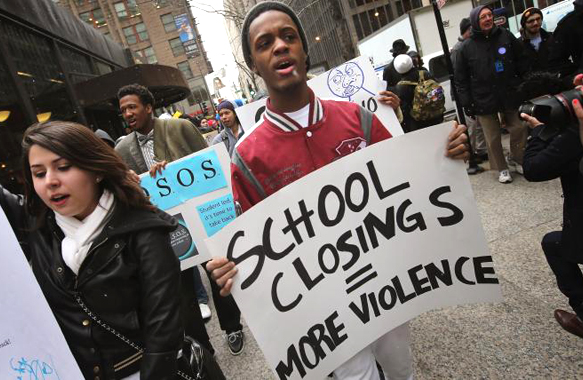
New Civil Rights Suit Calls School Closures Discriminatory
Sixty years after Brown v. Board of Education, schools are still both separate and unequal. Community and civil rights groups say they’ve identified a key force that’s aggravated the inequity: school closures. On May 14, on the same week the nation recognized the 60th anniversary of the Supreme Court’s landmark school desegregation ruling, the civil rights group Advancement Project and the national community group network Journey for Justice Alliance filed three federal complaints with the U.S. Department of Education and Department of Justice alleging that school closures in Newark, Chicago and New Orleans discriminate against African-American students.
“We’re in a new era of separate and unequal,” says Jadine Johnson, a staff attorney at the Advancement Project. “Inequity and discrimination still occurs in many schools across the country.” In Chicago, Johnson says, black students make up 40 percent of the district enrollment but were 88 percent of those affected by the 111 school closures the city has undertaken since 2001. In Newark, African-American students comprise 52.8 percent of the district enrollment, and 73.4 percent of those whose schools were closed. In New Orleans, African-American students are 82 percent of the district’s schoolchildren, but 96.6 percent of those whose schools closed. “When you look at who’s impacted, you realize this is more than just reform. This is discrimination and this is abuse,” Johnson says.
